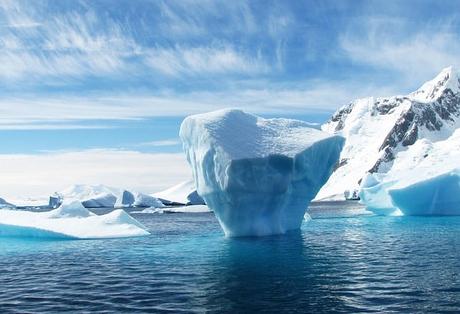As per recent research, glacial melting may become irreversible in Antarctica as it reaches a tipping point that has the potential for accelerated thawing even if heating eases globally.
Instability in the Thwaites glacier got identified in a NASA-funded study, which means a point would probably come when it would not be possible anymore to stop it from flowing into the sea causing an alarming 50cm rise in sea level. Rest of the Antarctic glaciers seemed to be equally unstable.

According to recent research, in the last six years, the rate of ice loss from five Antarctic glaciers has doubled and also found to be five times faster compared to that in the 1990s. Moreover, the ice loss outspread from the coast into the interior of the continent, while the thickness of the ice sheet at some sites reduced 100 meters and more.
The Thwaites glacier forming a part of the West Antarctic ice sheet may pose the most considerable risk for a swift rise in sea level in future. As per the research recently published in the Proceedings of the National Academy of Sciences journal, it most possibly surrendered to instability linked to beat the retreat of its grounding line on the seabed and thereby would result in its shedding of ice faster than expected before.
Alex Robel, assistant professor, the US Georgia Institute of Technology, who is leading the study, said, in case the instability was triggered, even if temperatures stopped rising, the ice sheet could be lost in the next 150 years. “It will keep going by itself and that’s the worry,” he said.
As per the suggestion of the modeling simulations, extensive ice loss would start in 600 years; however, the researchers think it could start sooner depending on the nature of the instability and of course the rate of global heating.
A jet propulsion laboratory scientist at Nasa, Hélène Seroussi, said: “It could happen in the next 200 to 600 years. It depends on the bedrock topography under the ice, and we don’t know it in great detail yet.”
The land-based ice in Antarctica is nearly eight times more compared to Greenland and 50 times more than all the combined mountain glaciers. The ice contained in Thwaites glacier alone is enough to increase the global sea levels by around 50 cm. Sea level rise triggered by global warming has already caused soaring coastal flooding and intensifying storms.
The precise estimation of the amount of ice the glacier would lose in the next 50 to 800 years’ time was not possible for the researchers because of the unpredictable climate fluctuations and data limitations. However, 500 simulations of different scenarios were marked, but those are losing stability. Therefore, uncertainty about future sea level rise has increased considerably, but it would be more likely the worst-case scenarios.
If the West Antarctic ice sheet gets lost completely, global sea levels would possibly increase by about five meters (16ft), and that may cause coastal cities worldwide to become submerged.
A “precipitous” fall since 2014 in the expanse of sea ice around Antarctica was found by a separate study last week in the same journal. According to the satellite data, the sea ice loss in Antarctica in four years is equal to the ice lost in 34 years in the Arctic.
The sea ice melting does not raise sea levels as happened in case of the thawing of ice sheets on land; however, due to the loss of the reflective white ice, the ocean absorbs more of the sun’s heat and increases the speed of heating.
During 40 years of measurement, Antarctic sea ice had been increasing slowly, and in 2014, it reached a record high, before falling significantly. The exact cause of such abrupt turnaround, however, is yet to determine.

